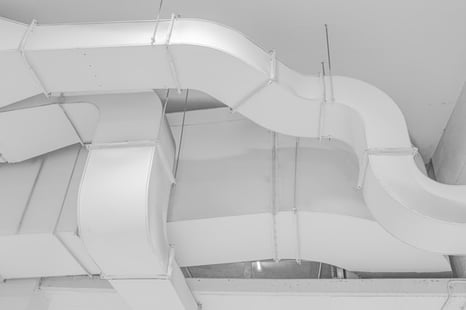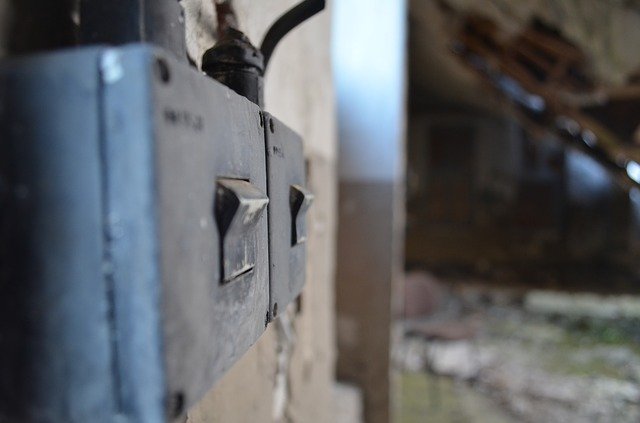Cx Associates has posted several blogs about an HVAC systems’ contribution to keeping building occupants as safe as possible from the COVID-19 virus. But for some building owners and tenants, understanding what they have for an HVAC system and what they can do to make their systems better isn’t immediately known without some help from experts in this industry.
As part of our COVID-19 response, our Building IAQ Assessment service has been crucial in providing recommendations regarding existing mechanical systems, filtration levels, and ventilation sources throughout a building. We also understand that these are difficult times and full building assessments can be costly, therefore we have developed a service that will provide a building owner the information they need to get started with improvements without breaking the bank. This blog will outline the steps we perform when completing a Building IAQ Assessment, what type of information we gather during our site visit, and the type of important information one can expect to see in the final report.
What’s First?
If a building owner or tenant asks us to complete an IAQ assessment of their building, we will typically ask for the following information/documentation:
- General building information, including square footage, hours of operation, occupancy data.
- Building plans and specifications, especially as-built HVAC drawings and mechanical equipment information but also any Testing, Adjusting, and Balancing (TAB) reports.
- If the building has a Building Automation System (BAS), any information on the sequence of operation for equipment controlled.
We will also ask questions like the following to better understand how the building is maintained:
- Is there a preventative maintenance and service contract in place? If yes, what does this service consist of? What is the filter changing protocol throughout the building?
- Any comfort complaints in the building? Any ongoing maintenance headaches with the existing systems? Is there any mechanical equipment that doesn’t function and why?
If you don’t have this kind of information, don’t despair, that’s very common!
- A lot of buildings do not have updated drawings OR any drawings outlining the as-built HVAC system. This is not a big deal! We will rely heavily on our site visit to understand what HVAC systems are present at your facility to ensure our recommendations are accurate.
- A lot of buildings do not have a preventative maintenance contract. This will ultimately be a recommendation of ours in the report since a preventative maintenance contract ensures regular filter replacement and proper equipment functionality but it is not a requirement for this building assessment.
Site Visit Checklist
After we have gathered what we can for building information and documentation, the next step is to schedule a site visit to review the building and HVAC system. These site visits vary in length depending on the size and type of building. Since we need to access a large portion of the building, some of these assessments are scheduled during off hours to minimize any disruption to occupants. It’s important to have someone with us during our site visit who is familiar with the HVAC equipment and what spaces it serves.
While on-site, we will look at the following to the extent it exists:
- Central Ventilation Systems:
- Review type of equipment and what it serves. This includes controls capabilities if known and fan motor data.
- Review outside air intakes to ensure there are no potential risks such as broken dampers or actuators, louvers aren’t sealed, exhausts in close proximity to intakes and ensure there is adequate separation of exhaust from pedestrian walkways or other similar locations.
- Review air distribution conditions of existing spaces looking for covered diffusers, blocked return grilles, overly closed supply diffusers/registers and return/exhaust grilles that are close enough to cause short cycling.
- If the unit is an ERV or HRV, we will also look at the wheel condition and if it includes intentional recirculation of return air.
- Unit Ventilators (commonly found in schools):
- Review outside air intakes for blockage.
- Review how outside air intake is controlled.
- Functionality of the outside air damper linkage and heating control valve
- Filters:
- For all equipment with filtration, document filter rating, size, condition and if filter fits well with no gaps resulting in air bypass.
- Exhaust Fans:
- Review all exhaust fans including how they’re controlled and runtime.
- Building Automation System (BAS):
- Review control system, including the capability for control, monitoring, trending, and graphics.
- If there isn’t a control system, we will review the functionality of the zone thermostats and determine if there are any factory controls with the central equipment.
- Review any scheduling of building/equipment. This could be done with timeclocks or at the various equipment and thermostats.
- Other:
- Does the building have operable windows?
- Specifically note any spaces that don’t have mechanical ventilation.
- Any need for an isolation room?
What Information is Provided in the Report?
There is a lot of information that we gather on-site, but ultimately we use this data and information to inform our findings and the recommended actions to meet the suggested COVID-19 guidelines. Each recommended measure will have a detailed description, recommendation of type of contractor to complete the work, and an initial high-level cost estimate for each action.
The following are just a few of the common measures we recommend:
- Increase filtration and confirm no air bypass on equipment that recirculates air. We recommend evaluating whether MERV 13 or higher filters are compatible (physical fit and pressure drop). If pressure drop will increase, evaluate whether the fan can overcome additional pressure drop and meet airflow requirements.
- Check operation of key equipment including dampers, valves, and actuators and repair/replace faulty equipment. Essential equipment includes ventilation system as well as heating components. Note that heating systems will be taxed with potential increases in outside air.
- Conduct ventilation airflow testing within each space and compare this to ASHRAE Standard 62.1 guidelines. Cx Associates has done this work in a number of buildings, as described in Jamie’s recent blog.
- Install ERV/HRV for buildings without mechanical ventilation
- Program ventilation fans and bathroom exhaust fans to operate for 2 hours prior to occupancy, all throughout occupied hours, and 2 hours after occupancy.
- Stand Alone HEPA filters. We recommend using these in spaces with a higher occupancy such as conference rooms or shared office spaces. The filter should be sized for 2-6 air changes per hour and select ENERGY STAR certified equipment as non-certified equipment may produce ozone as a by-product. The filters should be replaced every 3 months.
Every building is different in terms of systems and information available about the systems. Sometimes our recommendation may be to perform more survey work to determine next steps. The main goal of this report is to outline how your equipment serves the building and what can be done to make it safer for virus transmission mitigation.

.jpg?width=465&name=jasmin-sessler-pSN_nm_6qKc-unsplash%20(1).jpg)



